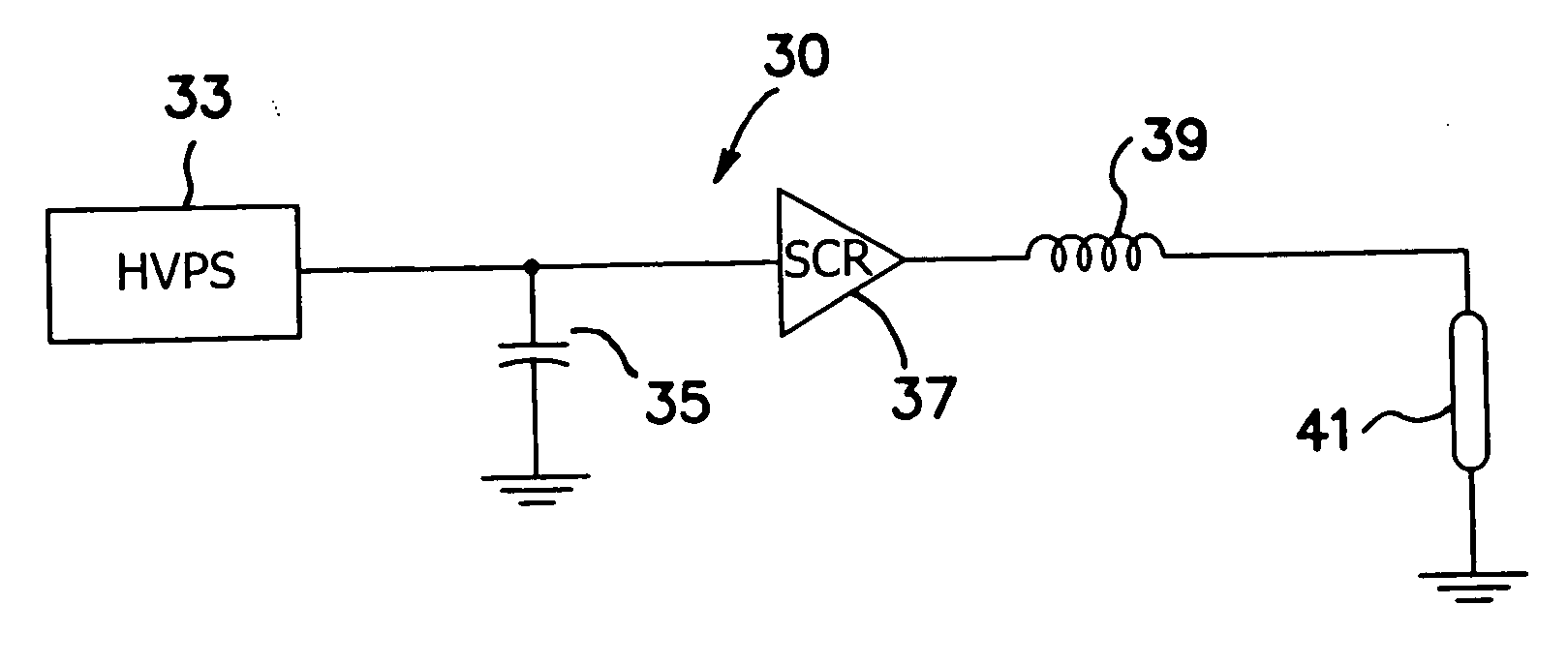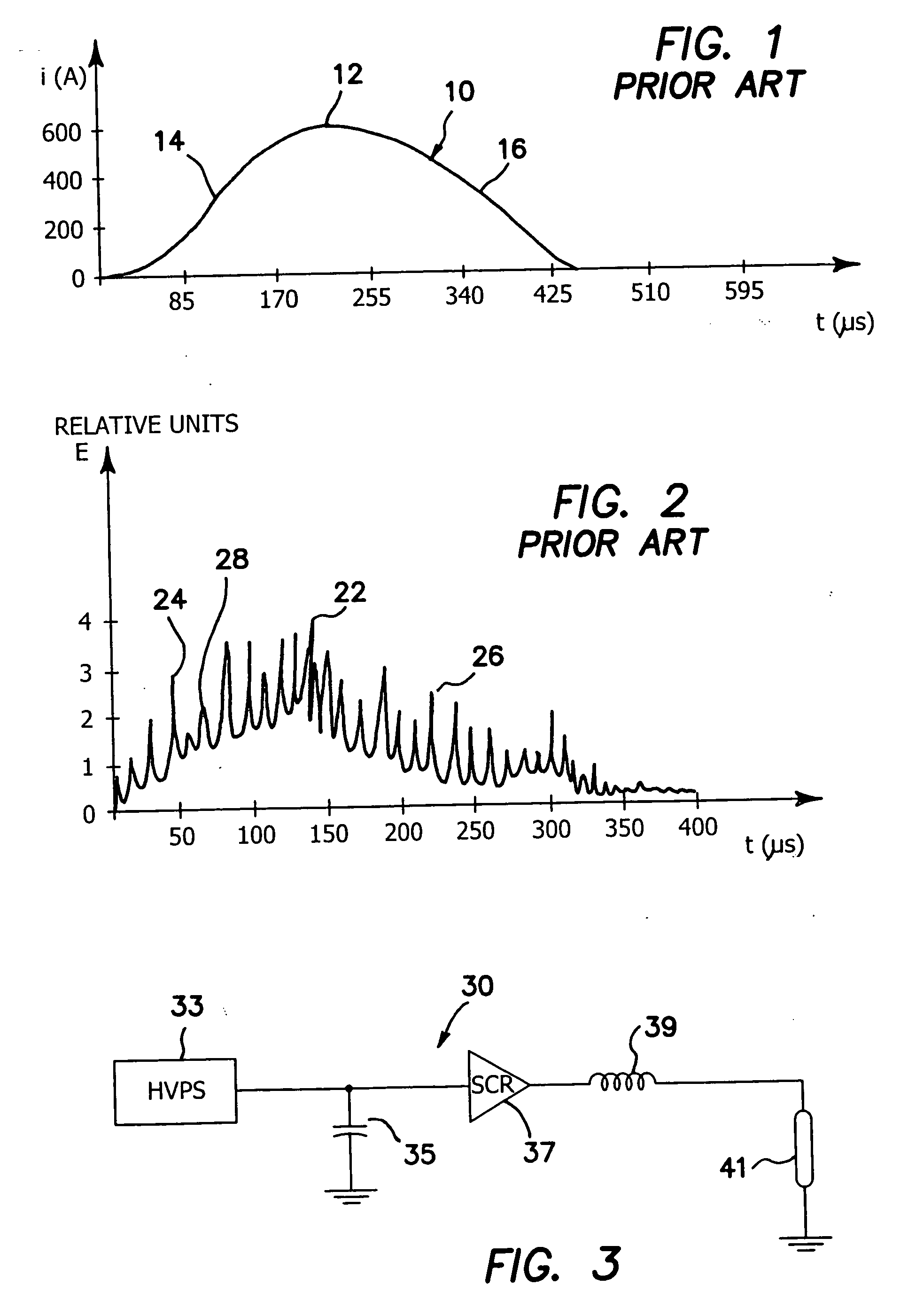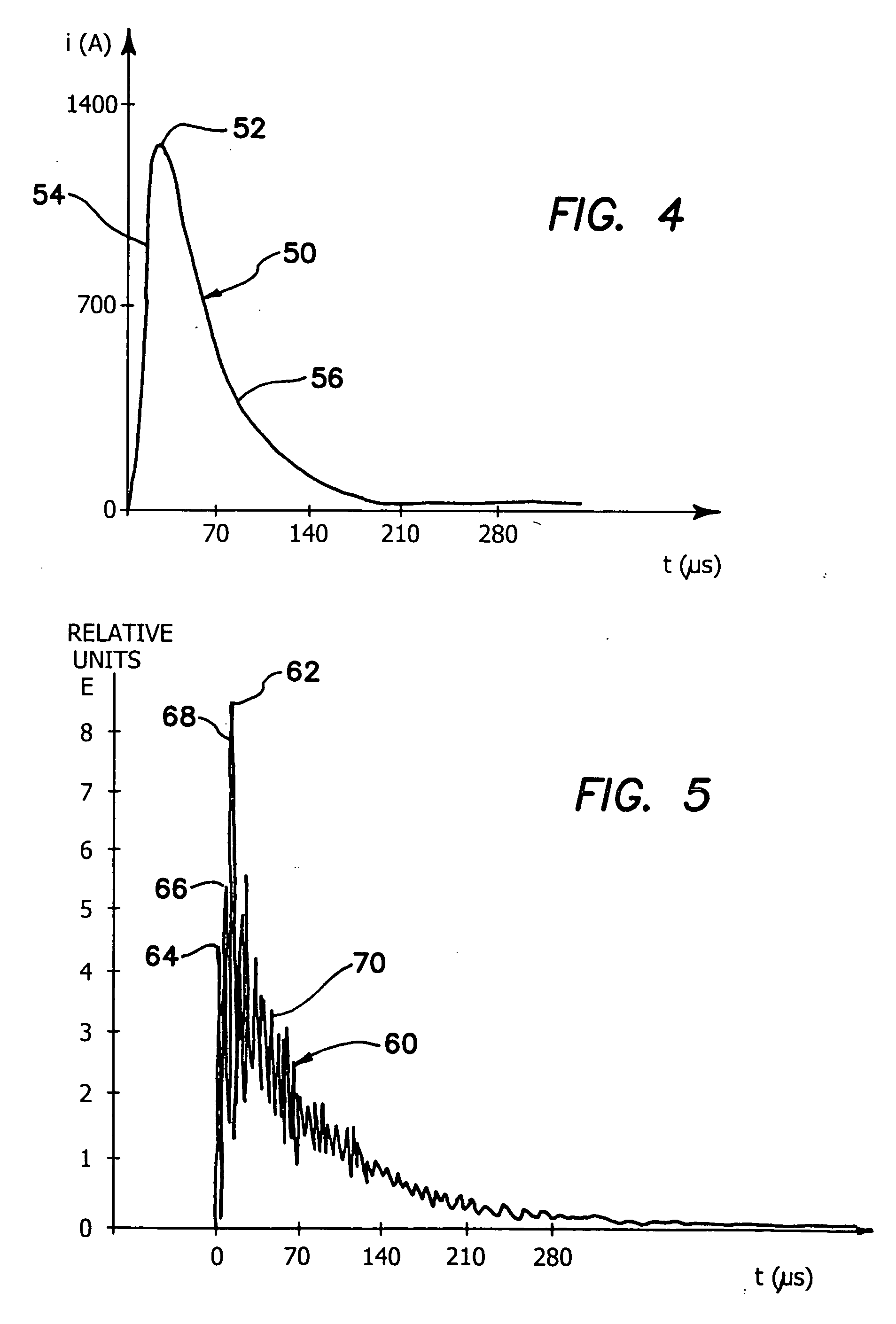Electromagnetic energy distributions for electromagnetically induced disruptive cutting
- Summary
- Abstract
- Description
- Claims
- Application Information
AI Technical Summary
Benefits of technology
Problems solved by technology
Method used
Image
Examples
Embodiment Construction
[0026] Referring more particularly to the drawings, FIG. 1 illustrates a plot of flashlamp-driving current versus time according to the prior art. The flashlamp-driving current 10 initially ramps up to a maximum value 12. The initial ramp 14 typically comprises a slope (current divided by time) of between 1 and 4. After reaching the maximum value 12, the flashlamp-driving current 10 declines with time, as illustrated by the declining current portion 16. Additionally, the flashlamp-driving current 10 of the prior art may typically comprise a pulse width of about 300 microseconds. The full-width half-max value of the flashlamp-driving current 10 is typically between 250 and 275 microseconds. The full-width half-max value is defined as a value of time corresponding to a length of the full-width at half-max range plotted on the time axis. The full-width half-max range is defined on the time axis from a beginning time, where the amplitude first reaches one half of the peak amplitude of t...
PUM
 Login to View More
Login to View More Abstract
Description
Claims
Application Information
 Login to View More
Login to View More - R&D
- Intellectual Property
- Life Sciences
- Materials
- Tech Scout
- Unparalleled Data Quality
- Higher Quality Content
- 60% Fewer Hallucinations
Browse by: Latest US Patents, China's latest patents, Technical Efficacy Thesaurus, Application Domain, Technology Topic, Popular Technical Reports.
© 2025 PatSnap. All rights reserved.Legal|Privacy policy|Modern Slavery Act Transparency Statement|Sitemap|About US| Contact US: help@patsnap.com



